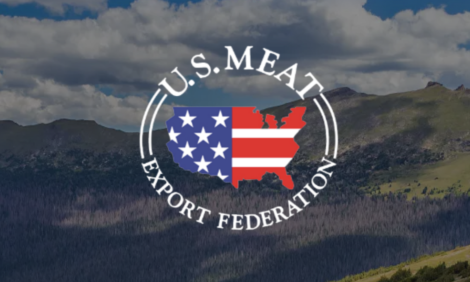



CME: Cyclically Eroding Hog Prices Expected
US - Both fed cattle and barrow and gilt live animal prices have experienced a downward trend the past couple months. A main influencing factor in these lower prices is increased supply in both industries, Steve Meyer and Len Steiner.The beef industry has actually experienced a decreasing price trend all year so far, and while supply increase is not the only factor, it is a driving one.
On the hog live price side, seasonally it is normal to see decreasing prices coming out of the Labor Day holiday, but prices actually started a noticeable decrease during late July. With a supply increase, cyclically eroding prices are expected, but supply is not the only variable in this price equation.
Demand is another very important factor. If we move one step further in the cattle and pig marketing process, to the beef and pork carcass cutout value, we can analyse how primal cuts have changed year-over-year and in the recent past months.
While this is by no means a direct measure of demand, it helps us understand more specifically if and what demand components are shifting with regards to primal carcass cuts.
A beef carcass is fabricated into seven primal cuts, specifically the brisket, chuck, flank, loin, rib, round, and short plate.
The USDA Agricultural Marketing Service (AMS) derives values for primal cuts from a weighted average of the associated sub-primal (wholesale cut) reported prices. USDA-AMS then calculates a negotiated carcass cutout value using the percentage yield contribution (PYC) to the total carcass weight and calculated value of each primal cut.
According to USDA-AMS for the week ending September 13th, the Choice loin primal cutout value was $312.61 cwt. The primal cutout value is then multiplied by its respective PYC, 21.25 per cent for the loin, which gives the percentage weighted value the loin contributes to the carcass cutout value as $66.43 cwt.
This is done for each of the seven primal cuts and the percentage weighted values are summed to calculate the carcass cutout value, which is not the same as a whole carcass price but rather an indicator.
The pork carcass is also fabricated into its respective primal cuts, and the same types of calculations are done to create the pork carcass cutout value.
Of course, as consumers most of us do not by primal cuts, we buy retail cuts that came from a broken down primal cut which were sold to a distributor on a wholesale level. But, retail prices that accurately portray what people pay at the restaurant or grocery store are more difficult to come by.
Starting with the beef carcass, and comparing the last week of August to the same time frame one year ago, the weekly average negotiated Choice Beef cutout value has decreased 18 per cent year-over-year to $200.34 per cwt. Within this cutout value are the primal values.
Year-over-year, based on weekly average values, the rib decreased 6 per cent, the chuck was down 21 per cent, the round down 24 per cent, loin decreased 18 per cent, brisket down 19 per cent, short plate down 14 per cent, and flank decreased 29 per cent.
The loin and rib are the highest valued primal cuts in the carcass, often referred to as the “middle meats”.
The beef cutout value usually increases from the start of the year into the fourth quarter. This year, the opposite seems to be happening so far, with value decreases since the start of the year. This general value decrease is expected with heavier beef supplies.
However, there is concern that the cutout value experienced a lacklustre price rally ahead of the Labor Day holiday. Seasonally, we would expect to see some strength in the cutout value moving into fourth quarter, but how much strength will depend on the combination of cattle slaughter levels and consumer demand.
Looking at the pork carcass cutout value, again comparing for the same time frame during the end of August, the weekly average pork cutout value (also reported by USDA-AMS) has decreased 12 per cent year-over-year.
Comparing the weekly average pork primal values year-over-year; the loin was down 2 per cent, the butt was up 16 per cent, picnic was up 17 per cent, rib down 19 per cent, ham up 3 per cent, and belly down a whopping 47 per cent.
To be fair, the majority of the decrease in belly prices has happened recently. The pork cutout value has been very seasonally consistent this year, in terms of how prices have tracked, up until an abrupt drop off in the beginning of August.
This timeframe is the same for the significant drop off in belly values, although spareribs and trimmings have both decreased noticeably since the first of August as well. The pork cutout value is not expected to see much steam through the end of the year, seasonally values peak mid-summer and decrease into fourth quarter.








